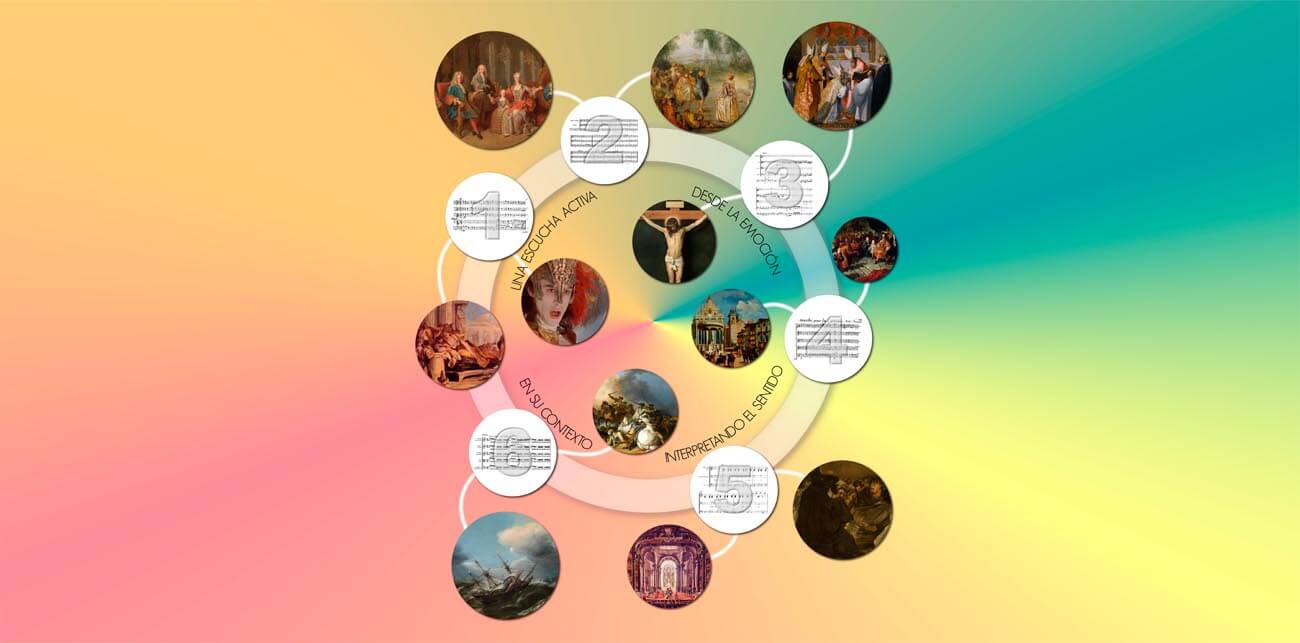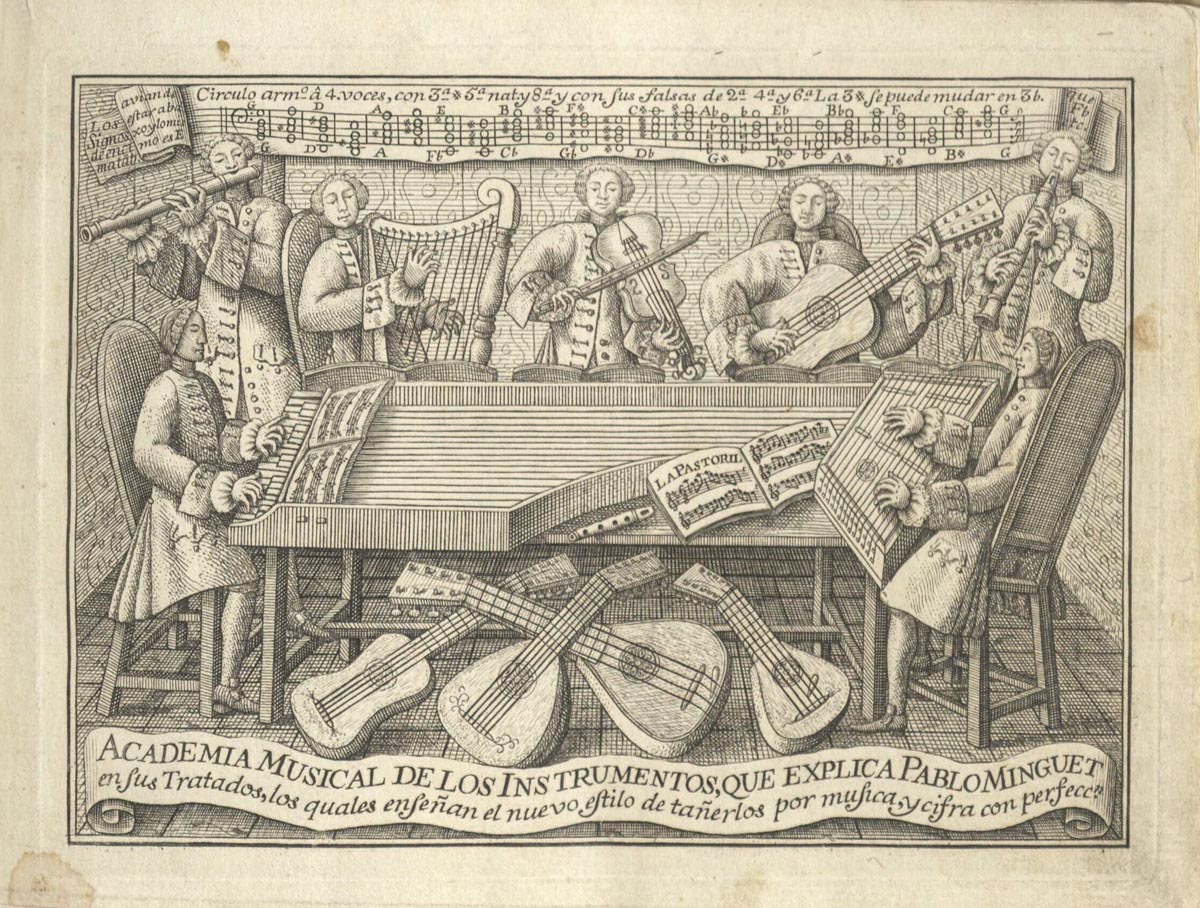prueba para el temaouiououo
Blog
Interactive application

Bibliography
Agawu, Kofi, Playing with Signs: A Semiotic Interpretation of Classical Music. Princeton: Princeton University Press, 1991.
_____ Music as Discourse. Semiotic Adventures in Romantic Music. Oxford: Oxford University Press, 2009.
_____ «La théorie des topiques: bilan, critiques et perspectives». In Narratologie musicale. Topiques, théories et stratégies analytiques, edited by Márta Grabócz, 43-72. París: Hermann, 2021.
Allanbrook, Wye Jamison, Rhythmic Gesture in Mozart: Le nozze di Figaro and Don Giovanni. Chicago: University of Chicago Press, 1983.
_____ «Two Threads through the Labyrinth: Topic and Process in the First Movements of K. 332 and K. 333». In Convention in Eighteenth- and Nineteenth-Century Music, edited by Wye J. Allanbrook et al., 125-171. Stuyvesant, Nueva York: Pendragon Press, 1992.
_____ The Secular Commedia. Comic Mímesis in Late Eighteenth Century Music, edited by Mary Ann Smart & Richard Taruskin. Oackland: University of California Press, 2014.
Caplin, William E., Classical Form. A Theory of Formal Functions for The Instrumental Music of Haydn, Mozart and Beethoven. Nueva York & Oxford: Oxford University Press, 1998.
_____ «On the Relation of Musical Topoi to Formal Function”, Eighteenth-Century Music 2, n.º 1 (2005): 113-124.
_____ «Topics on Formal Functions: The Case of the Lament». In The Oxford Handbook of Topic Theory, edited by Danuta Mirka, 415-452. Oxford: Oxford University Press, 2014.
Carrión Martín, Elvira, «La danza en España en la segunda mitad del siglo XVIII: el bolero». PhD Thesis. Universidad de Murcia, 2017. Access: 2022 February the 10th, https://www.tdx.cat/bitstream/handle/10803/405904/TECM.pdf?sequence=1&isAllowed=y
Day-O’Conell, Sarah. «The singing Style». InThe Oxford Handbook of Topic Theory, edited by Danuta Mirka, 238-258. Oxford: Oxford University Press, 2014.
Grabócz, Márta, ed. Narratologie musicale. Topiques, théories et stratégies analytiques. París: Hermann, 2021.
Haringer, Andrew. «Hunt, Military and Pastoral Topics». In The Oxford Handbook of Topic Theory, edited by Danuta Mirka, 194-213. Oxford: Oxford University Press, 2014.
Hatten, Robert S., Musical Meaning in Beethoven: Markedness, Correlation, and Interpretation. Bloomington: Indiana University Press, 1994.
_____ Interpreting Musical Gestures, Topics, and Tropes: Mozart, Beethoven, Schubert. Bloomington: Indiana University Press, 2004.
_____«The Troping of Topics in Mozart’s Instrumental Works». In The Oxford Handbook of Topic Theory, edited by Danuta Mirka, 514-536. Oxford: Oxford University Press, 2014.
Head, Matthew. «Fantasía and Sensibility». In The Oxford Handbook of Topic Theory, edited by Danuta Mirka, 259-278. Oxford: Oxford University Press, 2014.
López-Cano, Rubén. «Más allá de la intertextualidad. Tópicos musicales, esquemas narrativos, ironía y cinismo en la hibridación musical de la era global», Nasarre, 21, 1 (2005): 59-76.
McClelland, Clive, Ombra: Supernatural Music in the Eighteenth Century. Lanham: Lexington Books, 2012.
McClelland, Clive. «Ombra and Tempesta». In The Oxford Handbook of Topic Theory, edited by Danuta Mirka, 279-300. Oxford: Oxford University Press, 2014.
McClelland, Clive, Tempesta: Stormy Music in the Eighteenth Century. Lanham: Lexington Books, 2017.
McKay, Nicholas, «On Topics Today», Zeitschrift der Gesellschaft für Musiktheorie, 4, n.º 1 (2007): 1-30. Frech translation: «Où en est la Théorie des topiques aujourd’hui?», Narratologie musicale. Topiques, théories et stratégies analytiques, edited by Márta Grabócz, 73-105. París: Hermann, 2021.
Mirka, Danuta, ed. The Oxford Handbook of Topic Theory. Oxford: Oxford University Press, 2014.
_____ «Introduction». In The Oxford Handbook of Topic Theory, edited by Danuta Mirka, 1-57. Oxford: Oxford University Press, 2014.
Monelle, Raymond, The Sense of Music. Semiotic Essays. Princeton: Princeton University Press, 2000.
_____ The Musical Topic: Hunt, Military and Pastoral. Bloomington: Indiana University Press, 2006.
Pedrero-Encabo, Águeda, «Ecos de la Arcadia: tópicos en la Sonata en mi menor de Blasco de Nebra (1750-1784)». In: Musicología en transición, edited by Javier Marín-López, Ascensión Mazuela-Anguita & Juan José Pastor Comín. Madrid: Sociedad Española de Musicología, in press.
_____ «Una aproximación a la significación de la sonata a través de la interacción de schemata y tópicos», edited by María Nagore & Carlos Villar-taboada, Quodlibet (2023), in press.
Ratner, Leonard, Classic Music:Expression, Form and Style. Nueva York: Schirmer, 1980.
Rosand, Ellen, «The Descending Tetrachord: An Emblem of Lament», Musical Quarterly 65 (1979): 346–359.
Rumph, Stephen, «Topical Figurae: The Double Articulacion of Topics». In The Oxford Handbook of Topic Theory, edited by Danuta Mirka, 493-513. Oxford: Oxford University Press, 2014.
Sánchez-Kisielewska, Olga, «Interactions between Topics and Schemata: The case of the Sacred Romanesca», Theory and Practice 41 (2016): 47–80.
_____ «The Romanesca as a Spiritual Sign». In Singing in Sings: New Semiotic Explorations of Opera, edited by Gregory J. Decker & Matthew R. Shaftel, 163-191. Cambridge: Cambridge University Press, 2020.
Sutcliffe, W. Dean, «Topics in Chamber Music». In The Oxford Handbook of Topic Theory, edited by Danuta Mirka, 118-140. Oxford: Oxford University Press, 2014.
Villar-Taboada, Carlos, «Del significado a la identidad: estrategias compositivas y tópicos en José Luis Turina». In Música y construcción de identidades: poéticas, diálogos y utopías en Latinoamérica y España, edited by Victoria Eli & Elena Torres, 261-281. Madrid: Sociedad Española de Musicología, 2018.
Yozhiyaka Almeida, Ágata & Diósnio Machado Neto, «Interação entre tópicas musicais e o esquema harmônico le-sol-fi-sol na Missa de Réquiem (1816) de Marcos Portugal», Música Hodie 20 (2020): 1-31.
Teamwork
The Project
This proposal for teaching innovation arises from the difficulties observed in the students of the Degree in History and Music Sciences at the University of Valladolid in handling musical analysis tools. The use of concepts from music theory and their practical application, both in score reading and listening, represents one of the main problems detected in said students, affecting various subjects. This deficiency is particularly noticeable in the subject “Music and Thought in the Enlightenment Century (18th century)”, which is taught in the first semester of the 2nd year of the degree. Its competencies include the analytical study of Central European tonal music and establishing its connection with the stylistic and philosophical currents of the time.
The subject covers a very extensive period in music history, known as the “long” 18th century, spanning from around 1680 to around 1790. This periodization is an adaptation of recent proposals by Webster (2004) and Keefe (2009), supplemented by the reevaluation of the Galant period between 1720 and 1780 (Heartz, 2003; Gjerdingen, 2007), consolidating a new trend in analyzing and understanding this era. Previously, and according to traditional periodization inherited from art studies (Wöfflin, 1888) and influenced by musical studies by Bukofzer (1947), this period was divided into two periods and designed into two subjects: History of Music in the Baroque – covering the first half of the century (up to 1750, a significant date with the death of J. S. Bach) and History of Music in the Classicism. With the new guidelines of the Bologna Process, the curriculum is modified, opting for a periodization more in line with current historiographical approaches. From the perspective of musical analysis, it is more coherent to study this century as a unit, in a single subject focusing on the analysis of tonal or common practice repertoire: from the beginning of the 18th century with Corelli’s innovations to the Viennese classical style (with Haydn and Mozart as paradigms and excluding Beethoven).
Furthermore, with the new plan for reforming the European Higher Education Area (EHEA), the subject now consists of 6 credits with a semester-long development. This situation has prompted the search for new methodological proposals to facilitate the coverage of a fairly extensive syllabus, which includes works by the great masters (Vivaldi, J. S. Bach, Handel, Mozart, and Haydn), while also incorporating recently recovered repertoires from the Galant period (Porpora, Hasse, Vinci).
